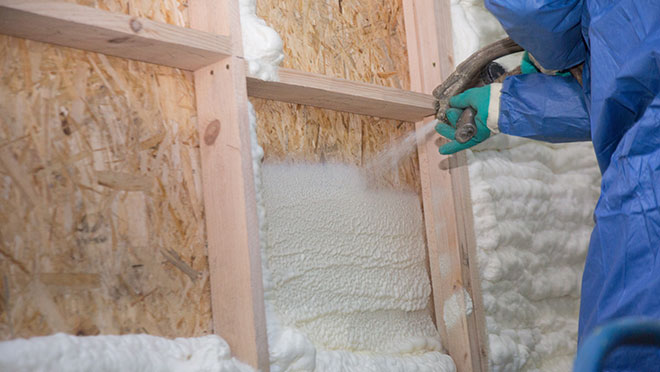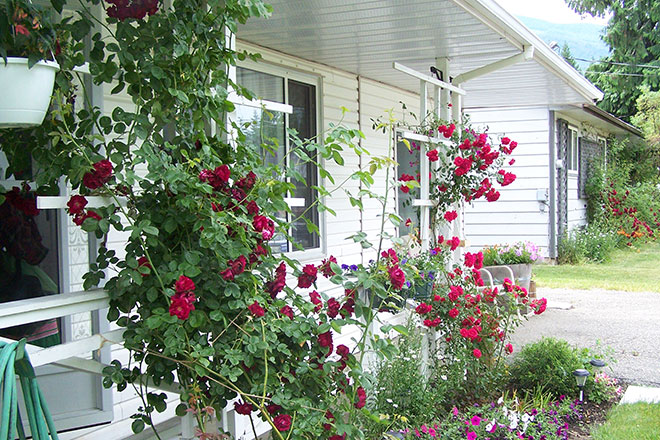Home renovation safety in the time of COVID-19

Work with contractors on a plan that protects both them and you
Early on in the novel coronavirus pandemic, construction and associated skilled trades workers were deemed an essential service in Canada. But it's one thing to work on a building that's empty, and quite another to do renovations on a home that's occupied.
In both cases, workers have had to adopt new measures to prevent the spread of the COVID-19 virus. But when there are people in the home, it takes careful cooperation to ensure everyone is safe.
"It isn't just about comfort and risk management for the homeowner, it's also for the workers," says Mark Cooper, president of the Homebuilders Association of Vancouver (HAVAN). "Everybody needs to be on the same page. You have to figure out how you're going to get together to provide safety for each other."
The good news is that contractors such as Cooper have put a great deal of thought into how work is done at a home. At his own company, Cooper said the majority of work during the pandemic was on major projects at homes that weren't occupied. Embracing and enhancing measures included in WorkSafeBC guidelines, Cooper made a number of changes to his crews' work sites, including:
- Regular spraydown of tools and equipment, including locks and trailers
- Sanitizing everything on site at the close of each work day
- Reducing the number of workers, to a maximum of three per job site
- On-site training and individual set-up with masks and hand sanitizers
- Keeping workers showing coronavirus symptoms off the site, even if those symptoms might be caused by seasonal allergies
Cooper took it upon himself to innovate, building temporary wash stations equipped with a tap and basin in his workshop that could be transported to a work site and hooked up to a standard garden hose.
"We've also asked that our clients don't visit our job sites, in the evenings or on weekends," he says. "We've made it very clear that we're in control of the health and safety of the home and the people that work there. Instead, clients can make an appointment for a visit, and be escorted through their home."
But what happens when renovations are happening in part of a home, with the residents still living there? That's where cooperation between work crews and residents is doubly important.
Working at occupied homes, from kitchen renos to heat pump and insulation installations
BC Hydro's home renovation rebates continue to be popular, as B.C. homeowners move to improve their home's energy efficiency by upgrading insulation, windows and doors, or installing heat pumps or more efficient water heaters. To qualify for rebates, homeowners must use a contractor for the work, and preferably a Program Registered Contractor who receives specific training on industry best practices.
In some cases, it's possible to seal off an area of the home, such as a kitchen served by an entry door to the exterior. Contractors can install temporary walls that are friction-fitted to block off a work area and which use a foam gasket to ensure a vapour and sound barrier that can allow residents to feel safe and comfortable in the home, even while work is being done.
"There are times when workers need to go to other parts of the home, to shut off power, gas or water lines," says Cooper. "But that's a controlled visit where you might say 'Mr. homeowner, I need to go into the basement tomorrow morning at 9 o'clock. Is it possible for grandma to move to another part of the home while we're in the basement?'"
Heat pump installations, where the majority of work is installation of the main unit on the exterior of a home, can usually be done with minimal time spent inside the home.
"For the most part, if all the ducks are in a row, two days of scheduled visits – not even two full days – are enough to tidy up the inside portion of a heat pump installation," he says. "It's really a case of coordinating access with the homeowner."
Insulation upgrades generally involve a greater contractor presence in the home. One Program Registered Contractor operating out of Vancouver and Victoria has recently resumed blown insulation jobs in attics and walls after deciding to hold off on such work earlier in the pandemic. While they're dealing with a backlog of requests, the company has adopted a revised approach.
"We weren't doing blown insulation work for six weeks," says company owner Anny Knights. "We're only doing one home a day now so that we're not going from one lived-in home to another on the same day. And we ask that when our guys arrive that homeowners let us know where the access hatch to the attic is, then open the entry door for the guys to haul in the hose."
Workers are well protected in what is a form of a hazmat suit. Knights says there's generally one technician inside and one outside at the truck for the work. To minimize hauling the hose through a big portion of the house to reach a back or upper floor room, the crew can sometimes bring the hose in through the window of the room where the attic hatch is located.
Insulation jobs involve two visits to a home, the first to get an estimate of the work.
"Everybody's very cautious right now," says Knights. "We have some people who flat out don't want us anywhere near them, while other people insist we come right now."
Construction industry employs more than 230,000 in B.C.
Cooper is part of a construction industry that was recently estimated to account for 8.6% of B.C.'s gross domestic product, second only to real estate, rental and leasing, and ahead of manufacturing. Cooper believes that's the key reason construction, which employs more than 230,000 in B.C., was deemed an essential service during the pandemic.
"Not only is construction one of the largest employers in B.C., but also one of the largest educators too," he says. "When you consider all the schools and colleges and other training that your neighbour's daughter or son might be at, taking architecture or design, all the trades people doing training, and layer it all the way up, there's a tremendous number of young people who are up-and-comers in the industry. I think it's our duty to support this industry any way we can, because it touches so many people and families."
As we share how some local contractors and organizations have adapted their practices, please keep in mind that BC Hydro is not the health and safety authority on the subject. Refer to the Government of B.C.'s resources for information and guidelines about construction safety amid COVID-19.
